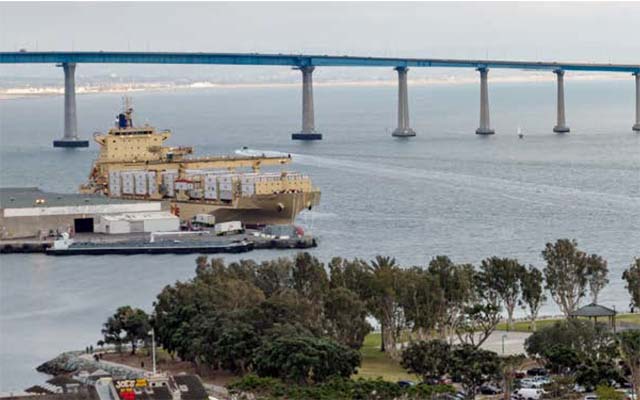Classification Society DNV has issued a reminder that the 2020 California Air Resources Board (CARB) At-Berth Regulation will require tanker and ro-ro vessels to use a CARB Approved Emission Control Strategy (CAECS) while at berth in California ports starting from 1 January 2025.
The original 2007 At-Berth Regulation applied to container ships, passenger ships and refrigerated-cargo ships at certain California ports. Compliance with the 2007 regulation started in 2014. The subsequent 2020 At-Berth Regulation requires all oceangoing vessel operators and terminal operators to report each visit made to any California marine terminal. However, currently only container, refrigerated cargo and cruise vessels have emissions control requirements. Starting from 1 January 2025, compliance with emissions control requirements will apply to the following:
- Tanker vessels visiting terminals in the Port of Los Angeles and Port of Long Beach
- Ro-to vessels visiting any California terminal
Bulk and general cargo vessels do not have emissions control requirements, but they do have visit reporting requirements that began 1 January 2023. The 2020 regulation took effect on 1 January 2021; however, emissions control requirements in the 2020 regulation are being phased in according to the list below.
- 1 January 2023 Container and refrigerated cargo vessels
- 1 January 2023 Cruise (passenger) vessels
- 1 January 2025 Ro-ro vessels (including vehicle carriers)
- 1 January 2025 Tanker vessels visiting Port of Los Angeles or Port of Long Beach terminals
- 1 January 2027 Tanker vessels visiting any California terminal
Regulated emissions are NOx, particulate matter 2.5 (PM 2.5) and reactive organic gases (ROG). The primary regulated parties are the vessel operators, terminal operators, California ports and CAECS operators.
Vessels and other regulated parties have the following options for compliance:
- Connection to onshore power (OPS) while at berth
- Use of a CARB-approved exhaust capture and control system. There are currently two companies (STAX Engineering
- and Clean Air Engineering Maritime) with plans to have an approved barge-based exhaust capture solution for tankers available by 1 January 2025
- Payment into a Remediation Fund. The payment into the fund cannot be triggered solely from lack of available alternative CAECS (a vessel needs to show eligibility and get approval).
- Alternative fuels (e.g. LNG), with the need to provide testing data that emission rates meet the 2020 At-Berth Regulation performance standard.
- An innovative concept solution that achieves equivalent emissions reduction from other sources around the port.
CARB has an Enforcement Penalty Policy and will investigate any potential violation. If a company is deemed to be in non-compliance, a Notice of Violation may be issued. A financial penalty could be the result after each violation. The penalty for non-compliance can be imposed on all regulated parties, including the vessel operators.
DNV recommends that tankers calling at Port of Long Beach and Port of Los Angeles terminals in 2025 and ro-ro vessels at any California terminal should prepare for compliance. There are currently no indications that enforcement of the regulation will be delayed.
Image: CARB emission rules are soon to be extended (source: DNV)



